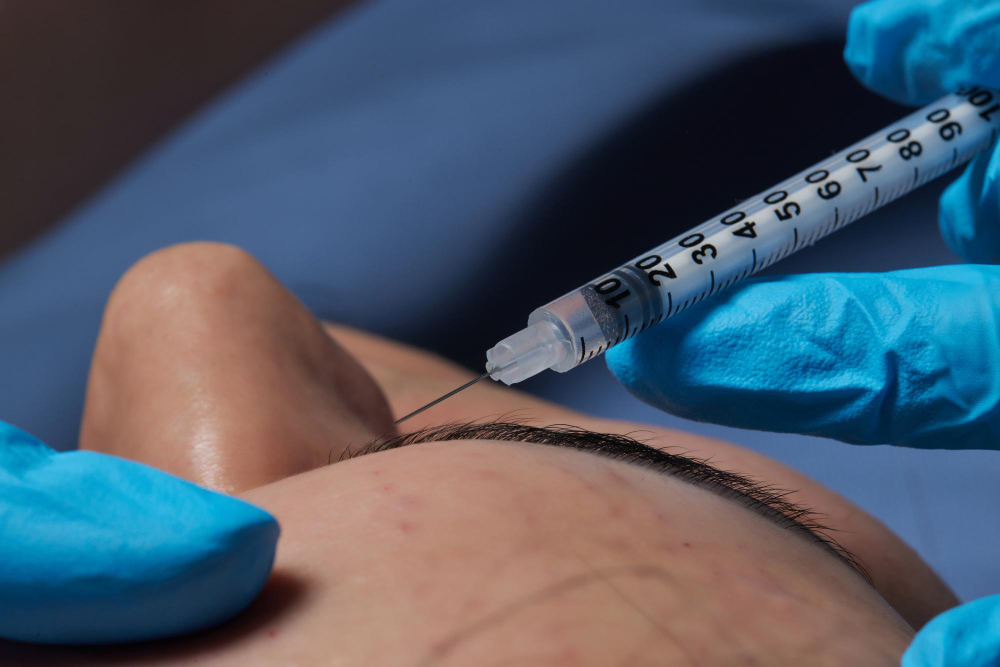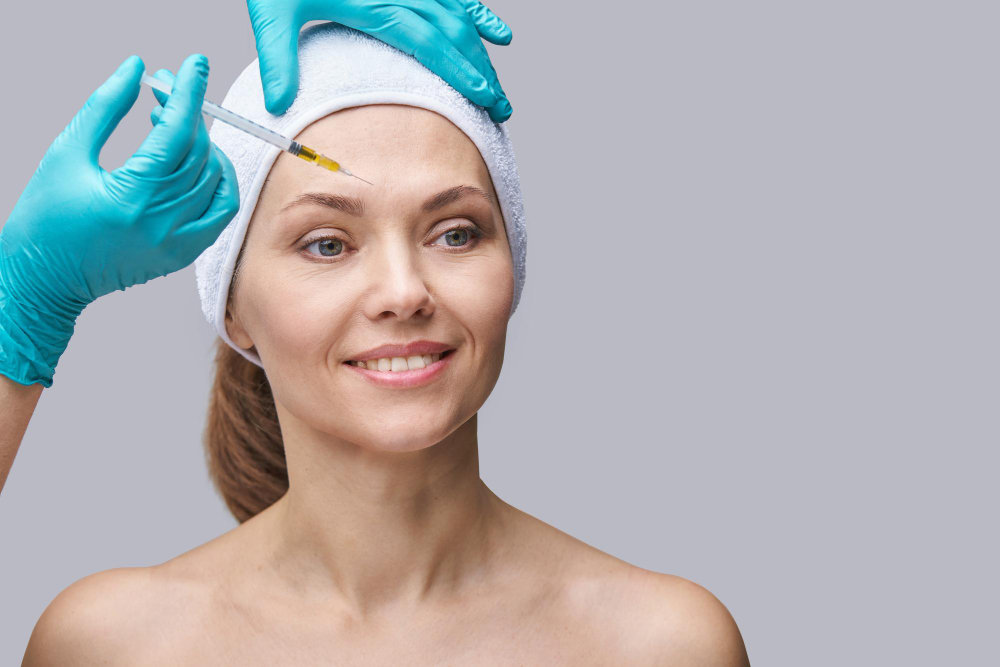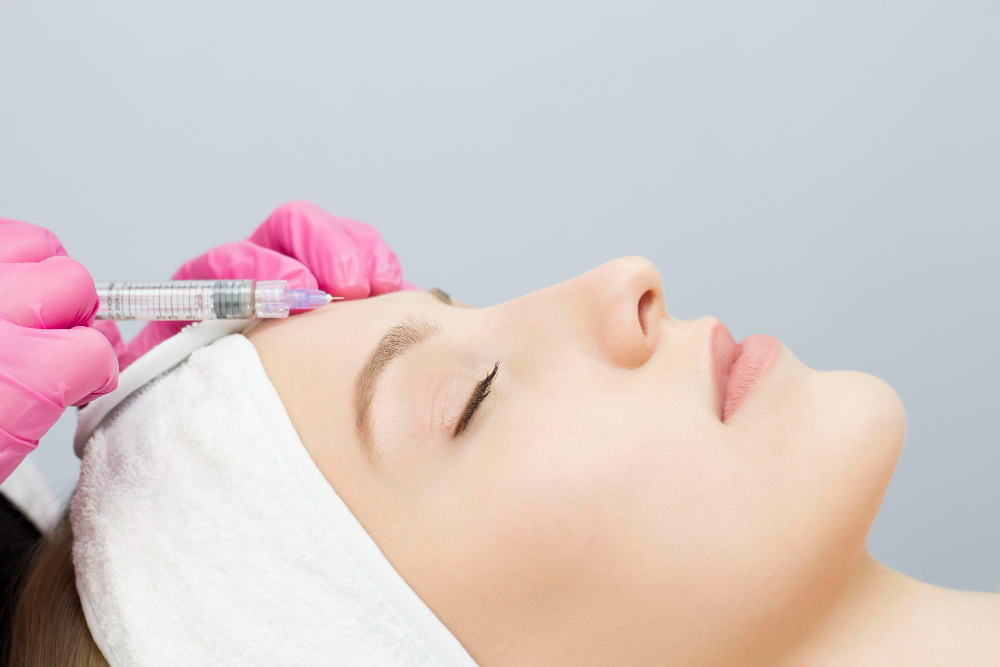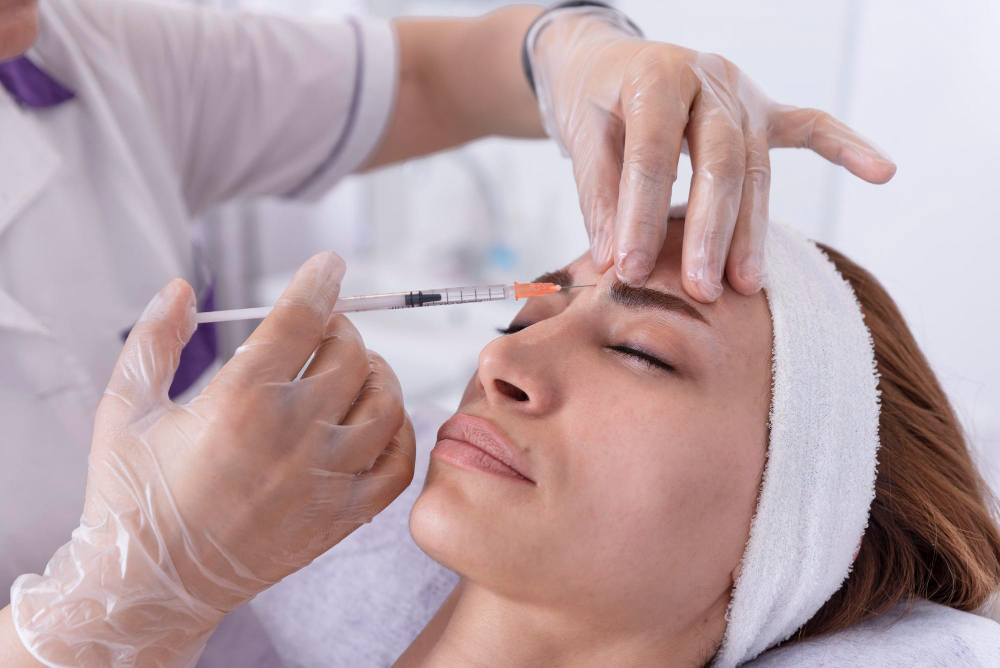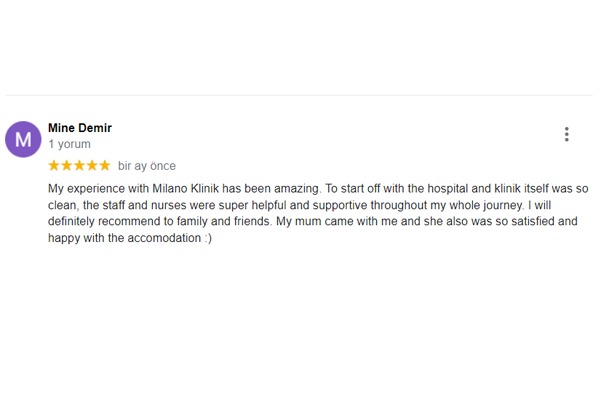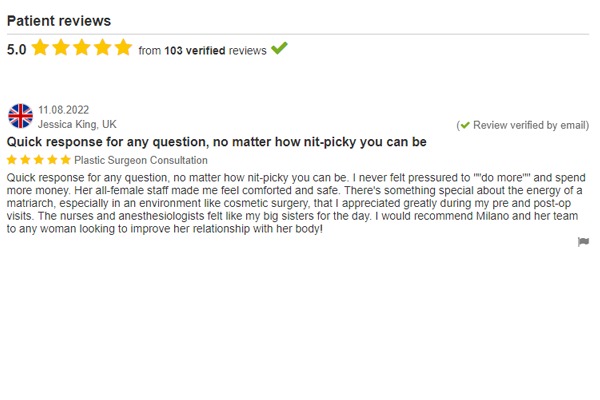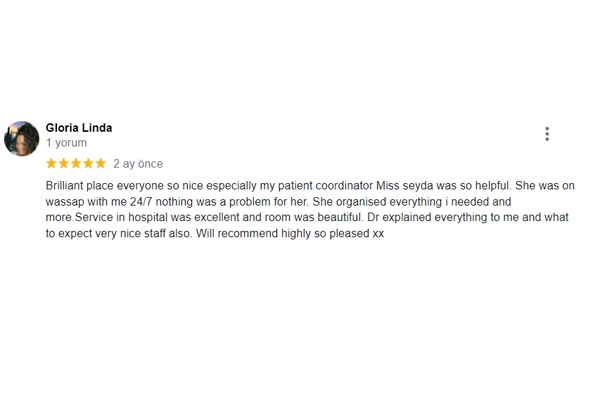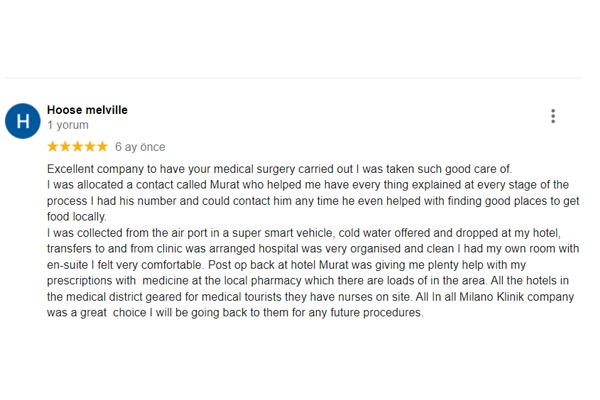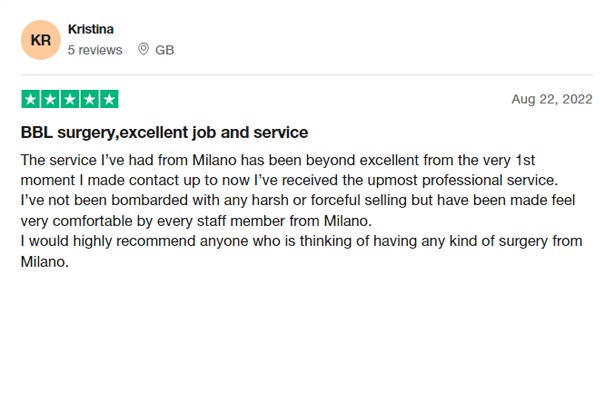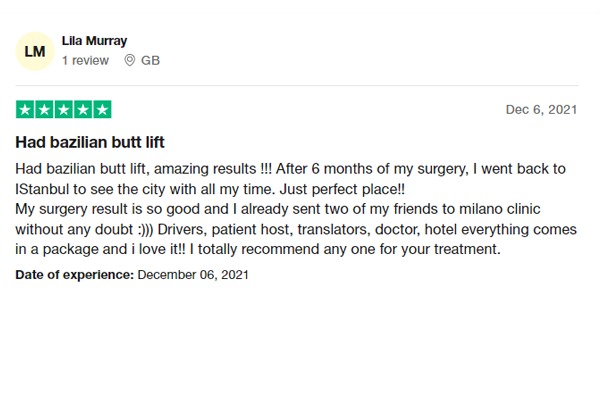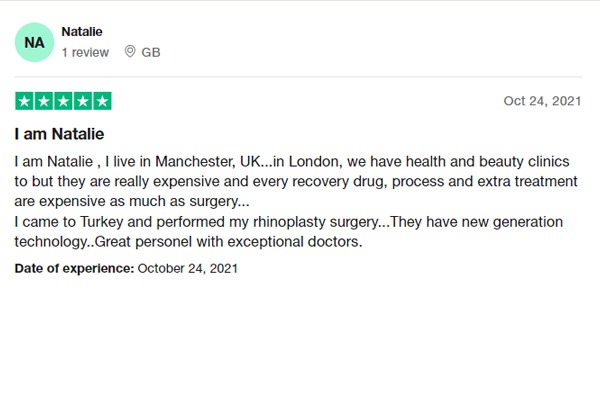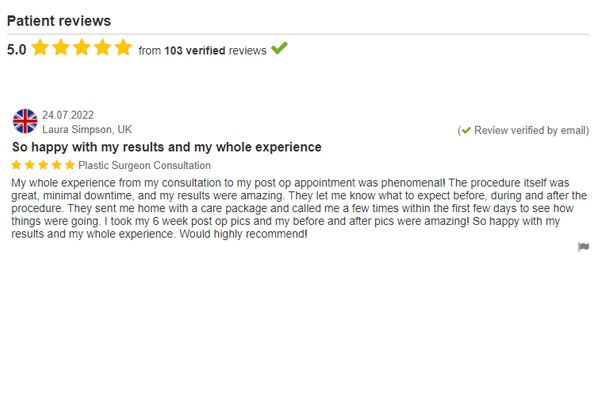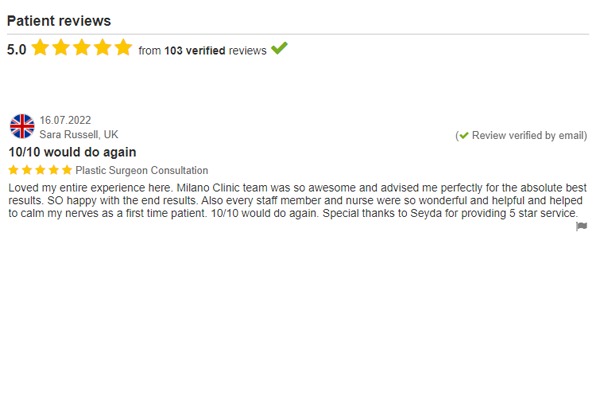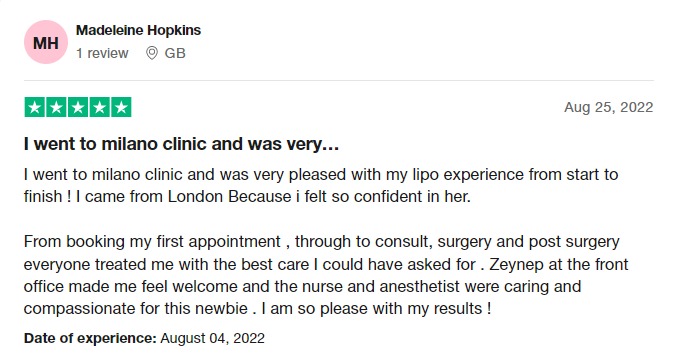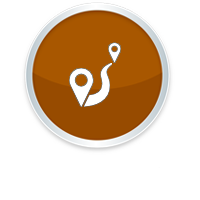FOREHEAD LIFTING IN TURKEY
Real Testimonials
MilanoKlinik Comments
Forehead Lifting in Turkey
Low eyebrows caused by age, wrinkles on the forehead and around the eyes, as well as wrinkles created by facial emotions and wrinkles on the forehead, are all annoying cosmetic flaws. Furthermore, these characteristics make you appear older. As a result, successful surgeons in Turkey perform the forehead lifting procedure. Some patients also refer to forehead lifting aesthetics to correct the frown eyebrows.
After the surgery, you can reach a much younger appearance. Also, because eyebrows in the forehead area will be softening, problems of clutter or eyebrow in the eye margins are also resolved. So it can be said that it is an extremely useful application.
Forehead Lifting Surgery Card
| Duration of Operation | Changeable 2-3 Hours |
| Operation Area | Face-Eyes |
| Anesthesia Type | General |
| Pain Treshold | During Operation |
| Start Time | Post/Op 1 |
| First Shower | 5 Days Later |
| Recovery Time | Between 1-2 Months |
| Re-operation Status | 1 Year Later & It's Up To Preferences |
| Gym-Cardio | 2-3 Weeks Later |
| Suture Mark | No Suture |
| Age Limit | Up From 18 |
| Suture Type | Meltable |
| Oedema Status | Less/Average |
| Hospitalize | 1 Night |
| Open/Close Technic | Close |
What is Forehead Lifting?
The goal of a forehead lift surgery is to remove excess skin from the area of the forehead utilizing a variety of procedures. Furthermore, various operations are conducted on the brows' posture, and creases in the forehead are erased.
A youthful appearance is created by reducing forehead wrinkles. Problems like sagging of the brows or piling up of the eye edges are also eliminated since the brows in the frontal area are relaxed. As a result, elevating the brow is a critical application in a variety of ways. After the forehead lift, there is no visible scar.
Cost of Forehead Lifting
The cost of a forehead lifting varies based on the manner and scope of the procedure. In addition, depending on the patient's choices and needs, more operations may be required. For example; Face Lift Surgery or Facial Fat Transfer.
Frequently Asked Questions About Forehead Lifting
What Age is Ideal for Forehead Lifting?
The age of 40 and above is ideal for this process.
Preparation Process Before Forehead Stretching and Lifting Aesthetics
Before the procedure, a detailed examination is performed by the plastic surgeon. The skin and facial structure are controlled as well as the patient's scalp.
In addition, the patient's medical history is also questioned. Then the risks of forehead lift aesthetics and the health problems that can be experienced are assessed.
The problems that may be encountered after the procedure with the patient are discussed in detail. After all these interviews, the type of anesthesia to be preferred and other techniques are evaluated by the plastic surgeon.
There are some tasks that fall into patients during the preparation process. Firstly, every question concerned about the forehead lifting process should be transferred to the expert doctor. Because you shouldn't have any worries before the procedure. In the preparation process, some laboratory tests are requested by the surgeon with detailed questions to be answered. Drug use should also be terminated before surgery. In addition, no food consumption should be made after midnight before the operation.
Finally, the following situations must be paid attention
- Alcohol and cigarette consumption should be terminated about 10 days before the procedure.
- The consumption of herbal tea or herbal medicine should be reduced 1 week before the operation.
- Blood thinners should also be left 1 week in advance.
- No jewelry should be worn on the day of surgery, and no operations such as nail polish and makeup should be performed.
How are Forehead Stretching and Lifting Aesthetics Done?
Forehead Lifting ia applied under general or local anesthesia. It can also be applied as sedated and without sedation. For patients who can be discharged on the same day, it is still recommended to rest at the hospital overnight. If the surgery is performed under sedation, mild pain may occur in the patient
However, if general anesthesia is preferred, patients are put to sleep during the surgery. Depending on the technique to be preferred from the application, the sleep time is 1 or 2 hours.
In the process that begins with an incision in parallel to the posterior part of the natural hairline, the surgeon distinguishes the area beneath the eyebrow with the forehead region. The forehead is separated from the eyebrows with the skin. Then the procedures are initiated as the patient demands.
Excess skin in the forehead is cut between 1 and 3 centimeters and removed successfully. After the procedure, the surgery area is closed using a wire suture or sutures.
As an alternative to this process, the endoscopic technique is used. This application usually requires advanced technology. Small cuts are discarded at the back of the hairline. Then the endoscope is placed under the skin. Then a different incision is opened and the surgical instruments are accessed to remove the forehead skin.
The temporary forehead skin is kept up and the forehead lifting aesthetic is completed. Nowadays, the most widely used technique is surgery made by opening the coronal incision.
The healing process after the operation is shorter in this process, which is located at the back of the hair. Endoscopic forehead lift operation can also be completed in the same way. Patients can be discharged after the surgery. which lasts close to 2 hours.
Healing Process After Forehead Lifting
In order to reduce the edema that may occur after the operation, an elastic bandage is applied to the head and face area. Also, the day after the procedure bandage is replaced with a new elastic bandage winding. Your surgeon will share with you the need to use this bandage for a few days. In addition, the bandage must be used at night for 7 days after the operation. This technique is used only for the first few days to avoid edema.
A cold compress can be useful after forehead stretching. For excessive pain, redness, or different complications, you must be contacted by the doctor. The sutments in the forehead area are removed at the end of 1 week.
Finally, there should be no exhausting activity for up to 3 weeks after the operation. After a 1-week process, after the forehead lift operation, a shower can be taken. However, hot water should not be preferred when taking a shower.
Although it is also an operation, the surgeon's recommendations must be obeyed during the recovery period. The formation of bruises and swelling after surgery is normal. However, you should also consult your doctor in cases that may cause prolonged pain.
The forehead should not fit on the face after stretching surgery and the head should not bend forward. In addition, all activities that will cause the stitches to be forced should be avoided. You can successfully complete the recovery period by paying attention to the recommendations of the aesthetic surgeon.
Sometimes side effects can also be seen in the eye area and cheeks. In fact, in addition to the adverse effects that must be met normally, the experience of sinking in the first days should not disturb the patient. In addition, since the sutments applied to the incision areas will be taken after 1 week, the general side effects would also be eliminated at the end of this process.
Is There a Risk of Infection in This Surgery?
There is a risk of infection in every surgery applied today. However, this risk is eliminated with the prescription of antibiotics by the plastic surgeon.
When Can I Return to Normal Life After the Forehead Lifting?
Within a few days after the procedure, a return to normal and business life can be provided.
When Can I Take a Shower?
The surgeon's recommendations should be considered at this stage. After 2-3 days, a warm shower can be taken.
How Long Does It Take to Relieve The Pain?
Pain that may occur after the operation lasts 2-3 days. These pains are in the form of mild pain.
Alternative Methods for Forehead Lifting Surgery
Nowadays, different methods have been developed as alternatives to this process. The first of these is Botulinum toxin applications. The most preferred and non-surgical method of toxin application in the world is completed in a short time in the clinical environment. It is recommended for those looking for a permanent solution, and the duration of impact is typically 6 months.
Another alternative is the rope hanging method. It is also called forehead stretching without surgery.
Finally, the Scarlet S Golden Needle Radiofrequency method can also be preferred. A controlled tightening in the forehead zone can be achieved by radiofrequency, a type of energy that does not contain radiation. In this application, preferred for the neck and face, micro energies are applied to the forehead region along with golden needles. This way, micro-jams occur. It is generally recommended to be done 3 or 4 sessions at one-month intervals.
Coronal stretching, aka the coronation process, is also recently wondered. In this application, you can have numbness for 6 months in the incision area. Itching can also occur in the surgical area. In addition, those who have low hairline and those who have fine-wire hair also benefit from not applying to this application.
Non-surgical Forehead Lifting
Forehead stretching operations can also be performed without surgery. This condition, which is called a rope stretch, is preferable for people with wrinkles that arise with advancing age. With the passing of years, the skin is deformed and as a result, of course, the wrinkles in the forehead region too. It is not a good condition for individuals to meet. Additionally, wrinkles appear in the forehead area in people who frequently use facial mimics.
The upper part of the face should be considered before applying the rope to the stretching application. This means that the problem should be fully detected and then applied by specialists.
How is Non-surgical Forehead Lifting Performed?
Prior to the forehead lifting operation, the specialist physician examines the forehead of the patient.
In addition, the face area is checked and the depth of the problem is investigated. Of course, which type of treatment should be monitored will also be decided. It is also shared with the patient how much material is needed for the procedure before the operation and which type of rope is preferred.
After the problems in the forehead and face area are checked, the ropes are placed under the skin and the forehead lifting process starts. Since the ropes used are medical, they do not cause any health problems in the body. The important thing is to place the ropes according to the correct regions.
Endoscopic Forehead Lift Aesthetics
Instead of classical forehead lift surgery, the preferred endoscopic method is much shorter, but it is one of the high recovery rate applications. However, serious sensitivity should be shown to the surgery.
Therefore, it is important that the surgeon has enough experience. In this process applied in professional centers with endoscopic hardware materials, the hair is not removed from the scalp. Only the forehead skin is released through the bone and the tension is provided in this way.
The area where the incision is made is the temporal region. In these areas with endoscopic devices, the upward stretching operations of the forehead area are initiated. This way, the area on the eyebrow and forehead is stretched upward and the process is permanent.
When Can I Start to Exercise After the Procedure?
Exercise and sports can be started 2 weeks after forehead stretching.
How Long Does It Take Without Surgery?
According to the problems in patients, the operation can last up to 30 minutes. The operation is required to solve the problem in a single session. However, if necessary, after a certain period of time, the retraction esthetics can be applied. This procedure can be applied to anyone without any health problems.
Which Medication Can be Used After Forehead Lifting?
Aesthetic operations are performed by specialist surgeons. Therefore, supplemental drugs should not be used except for drugs prescribed by the surgeon after the procedure. All medicines already prescribed are aimed at accelerating the healing process.
In general, painkillers are recommended to patients. Painkillers or other prescribed medications that need to be taken in a regular manner prevent complications that may occur.

